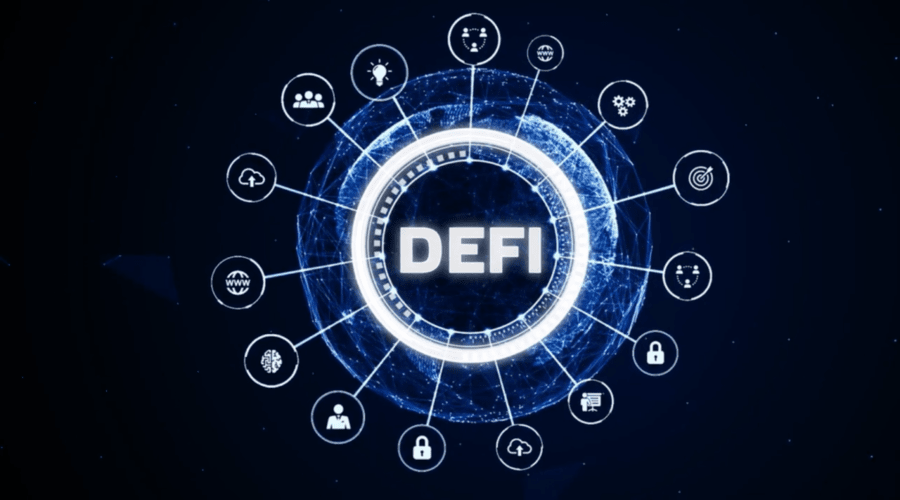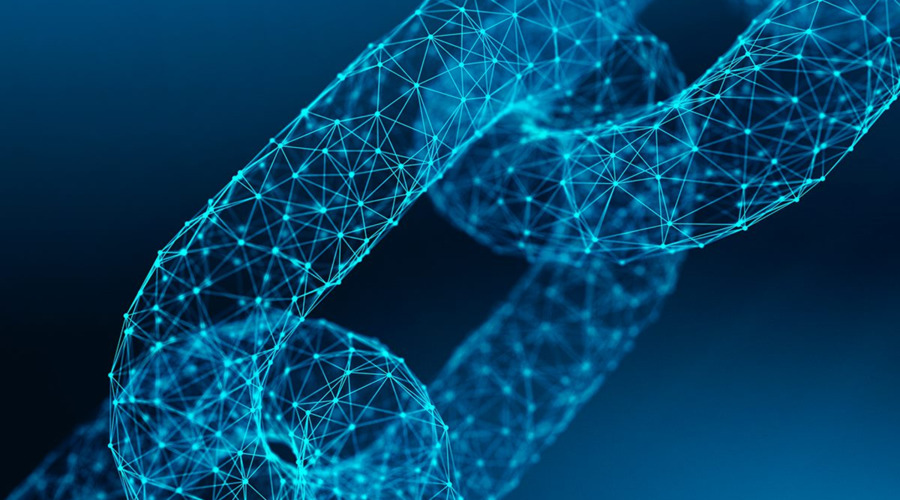Introduction
In recent years, two groundbreaking concepts have captured the imagination of the blockchain and cryptocurrency world: NFTs (Non-Fungible Tokens) and DeFi (Decentralized Finance). NFTs have revolutionized the ownership and provenance of digital assets, while DeFi has transformed traditional financial systems by leveraging the power of blockchain technology. This article explores the interplay between NFTs and DeFi, highlighting their unique characteristics, potential benefits, challenges, and future prospects.
What are NFTs?
NFTs are cryptographic tokens that represent ownership or proof of authenticity of a unique digital asset. Unlike cryptocurrencies such as Bitcoin or Ethereum, which are fungible and can be exchanged on a one-to-one basis, NFTs are indivisible and cannot be replicated. Each NFT contains distinct information, metadata, and a unique identifier, making it one-of-a-kind. NFTs have gained significant popularity in the art, gaming, and collectibles industries, enabling creators to monetize their digital creations and providing buyers with verifiable ownership rights.
Understanding DeFi
DeFi refers to a suite of financial applications and protocols built on blockchain technology that aims to replace traditional intermediaries, such as banks and brokers, with smart contracts. These smart contracts automate financial transactions, lending, borrowing, and trading activities, eliminating the need for intermediaries and reducing associated costs. DeFi has opened up new avenues for financial inclusion, enabling anyone with an internet connection to access financial services without relying on centralized institutions.
The Rise of NFTs
NFTs gained mainstream attention in 2021, with several high-profile sales and endorsements from celebrities, artists, and athletes. This surge in interest can be attributed to the unique properties of NFTs, such as provenance, scarcity, and the ability to establish direct relationships between creators and consumers. Artists and content creators now have the opportunity to tokenize and sell their work directly to their audience, bypassing traditional gatekeepers. This newfound economic empowerment has attracted artists from various disciplines, leading to an explosion of creativity in the NFT space.

Intersection of NFTs and DeFi
The intersection of NFTs and DeFi represents a convergence of two disruptive technologies. DeFi offers NFT holders opportunities to earn passive income by leveraging their NFTs as collateral for loans or participating in liquidity pools. On the other hand, NFTs can enhance the DeFi ecosystem by introducing new types of collateral, expanding the range of assets that can be tokenized, and enabling fractional ownership of high-value assets. This synergy creates a virtuous cycle where NFTs and DeFi mutually benefit each other, driving innovation and growth in the blockchain industry.
Benefits of Combining NFTs and DeFi
The combination of NFTs and DeFi unlocks several benefits for both creators and investors. For creators, it provides new revenue streams through the tokenization and sale of their digital assets. NFTs can also enable artists to retain royalties for subsequent sales, ensuring ongoing income from their work. Investors, on the other hand, can leverage NFTs as collateral in DeFi protocols to earn passive income or diversify their holdings. Additionally, the integration of NFTs and DeFi can enhance liquidity and trading opportunities, allowing for efficient price discovery and market dynamics.
Combining NFTs (Non-Fungible Tokens) and DeFi (Decentralized Finance) brings forth a multitude of benefits that revolutionize various industries. Here are the key advantages of merging these two disruptive technologies:
- New Revenue Streams: The integration of NFTs and DeFi enables artists, creators, and content owners to monetize their digital assets in unprecedented ways. By tokenizing their work as NFTs, they can sell directly to their audience, retain royalties for subsequent sales, and participate in revenue-sharing models. This opens up a whole new world of income opportunities.
- Liquidity and Trading: NFTs, when combined with DeFi protocols, enhance liquidity and trading opportunities. NFT holders can leverage their digital assets as collateral for loans, enabling them to access capital without selling their NFTs. Additionally, NFTs can be traded on decentralized exchanges, enabling efficient price discovery and facilitating seamless buying and selling experiences.
- Fractional Ownership: The integration of NFTs and DeFi enables fractional ownership of high-value assets. Tokenizing physical assets, such as real estate or rare collectibles, allows investors to own a fraction of the asset and benefit from its value appreciation. This democratizes access to traditionally exclusive markets and enables a wider audience to participate in investment opportunities.
- Passive Income Generation: NFTs can be used as collateral in DeFi lending and borrowing protocols, providing NFT holders with opportunities to earn passive income. By locking their NFTs in smart contracts, individuals can earn interest or participate in yield farming activities, contributing to the growth of their investment portfolio.
- Expanded Asset Collateral: The integration of NFTs expands the range of assets that can be used as collateral in DeFi protocols. This unlocks liquidity for illiquid assets and increases the variety of assets that can be tokenized and utilized in decentralized financial systems. It opens up avenues for individuals to access funds based on the value of their unique digital assets.
- Creative Incentives: Combining NFTs and DeFi introduces novel incentive mechanisms for creators and users. Through gamification and tokenomics, users can earn NFTs as rewards for participating in decentralized applications or contributing to community-driven initiatives. This fosters engagement, loyalty, and a sense of ownership within the ecosystem.
- Global Accessibility: NFTs and DeFi eliminate traditional barriers to entry in the financial and creative realms. They provide individuals from around the world, regardless of their location or background, with access to financial services, investment opportunities, and a platform to showcase their creativity. This promotes financial inclusion and amplifies global collaboration.
The interplay between NFTs and DeFi holds immense potential to reshape industries and empower individuals. By harnessing the unique characteristics of both technologies, we can unlock new revenue streams, enhance liquidity, promote ownership, and foster innovation in the digital economy.
Challenges and Risks
While the interplay between NFTs and DeFi holds great promise, it also presents challenges and risks. Scalability remains a concern, as the surge in NFT transactions can strain existing blockchain networks. Moreover, the nascent nature of the NFT market exposes participants to potential scams, counterfeit assets, and regulatory uncertainties. Smart contract vulnerabilities and security breaches are also potential risks in the DeFi space. Addressing these challenges requires collaboration between developers, regulators, and industry participants to build robust infrastructure and establish best practices.
Use Cases and Examples
The combined potential of NFTs and DeFi has given rise to various compelling use cases. One example is the fractional ownership of high-value assets, such as real estate or rare collectibles. By tokenizing these assets into tradable NFTs, investors can own a fraction of the asset and participate in its appreciation. Another use case is the creation of “play-to-earn” gaming ecosystems, where players can earn NFTs with intrinsic value and trade them in DeFi markets. These examples demonstrate the transformative power of NFTs and DeFi in revolutionizing traditional industries.
NFT Marketplaces and DeFi Protocols
Numerous NFT marketplaces and DeFi protocols have emerged to facilitate the intersection of these two domains. Marketplaces like OpenSea, Rarible, and SuperRare enable artists to mint, list, and sell their NFTs to a global audience. On the DeFi side, protocols such as Aave, Compound, and MakerDAO offer lending, borrowing, and yield farming opportunities using NFTs as collateral. These platforms form the foundation of the NFT-DeFi ecosystem, providing the infrastructure and liquidity necessary for widespread adoption.
Future Potential and Innovations
The interplay between NFTs and DeFi is still in its early stages, with immense potential for future growth and innovation. We can expect further integration of NFTs into DeFi protocols, enabling more efficient liquidity management, risk assessment, and trading mechanisms. Innovations in cross-chain interoperability and layer-two solutions will address scalability challenges, making NFTs and DeFi more accessible to a broader audience. As the technology matures, we may witness the emergence of entirely new financial paradigms, democratizing access to assets and redefining traditional notions of ownership.
Conclusion
The interplay between NFTs and DeFi represents a compelling intersection of two disruptive technologies. NFTs revolutionize digital ownership and provenance, empowering artists and content creators, while DeFi disrupts traditional finance, providing inclusive and permissionless access to financial services. By combining these forces, we unlock new possibilities for revenue generation, passive income, fractional ownership, and innovative financial models. As the ecosystem continues to evolve, it is crucial to navigate the challenges and risks, fostering collaboration and innovation to shape a more decentralized and equitable future.
FAQs
Q1: Are NFTs only limited to art and collectibles?
No, NFTs have expanded beyond art and collectibles. They can represent a wide range of digital assets, including music, videos, virtual real estate, and even in-game items.
Q2: Can NFTs be traded on any blockchain?
While the majority of NFTs are currently traded on the Ethereum blockchain, other blockchains like Binance Smart Chain and Flow also support NFTs. Each blockchain has its own unique features and ecosystem.
Q3: Is investing in NFTs and participating in DeFi risky?
Like any investment, there are risks involved in investing in NFTs and participating in DeFi. It’s important to conduct thorough research, understand the risks involved, and only invest what you can afford to lose.
Q4: How can NFTs benefit artists and content creators?
NFTs provide artists and content creators with new revenue streams, direct engagement with their audience, and the ability to retain royalties for subsequent sales of their work.
Q5: What is the future potential of NFTs and DeFi?
The future potential of NFTs and DeFi is vast. As the technologies mature, we can expect increased adoption, interoperability between different blockchains, and the emergence of innovative financial models that democratize access to assets and empower creators and investors alike.
